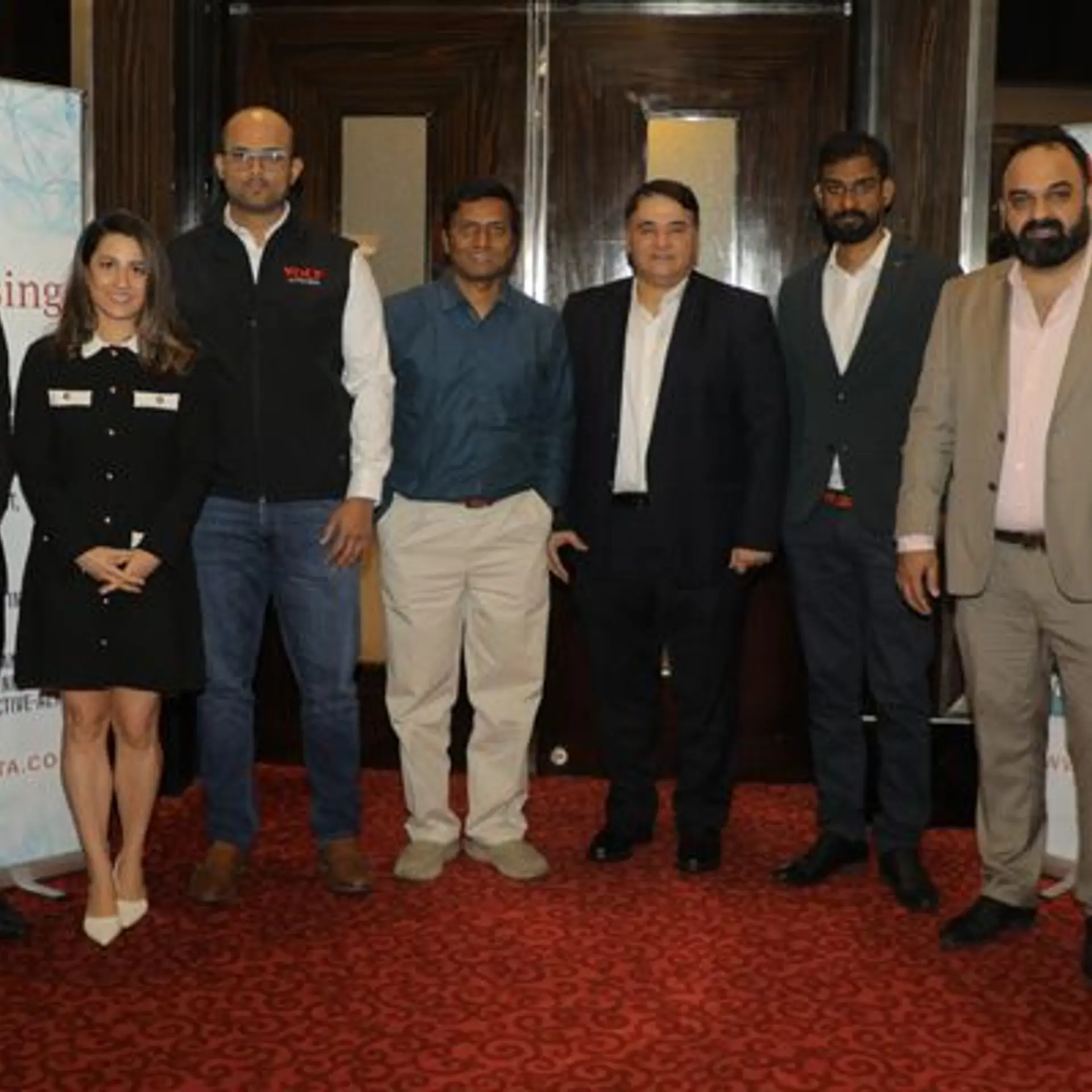Social commerce has the potential to touch revenues of $60-70B by 2030: Bain and Sequoia report
A report by Bain & Company and Sequoia Capital India says India’s social commerce sector, which is a $1.5 to $2 billion Gross Merchandise Value (GMV) market today, has the potential to grow to $16 to $20 billion in just five years, earning $60 to $70 billion in revenue by 2030.
A report by & Company and stated that “India’s social commerce sector will be two times the size of the current ecommerce market in 10 years”, driven by formats ranging from conversational commerce on chat platforms to video-led commerce, or a vibrant social reseller community.
Titled The Future of Commerce in India - the Rise of Social Commerce, the report said India’s social commerce sector, which is a $1.5 billion to $2 billion Gross Merchandise Value (GMV) market today, has the potential to grow to $16 billion to $20 billion in just five years, increasing to $60 to $70 billion in revenue by 2030.
Arpan Sheth, Partner and Leader of Bain & Company’s Asia-Pacific Technology, Vector and Advanced Analytics practices, said, “Social commerce in India is broadening India’s ecommerce sector and paving the way for a model that’s built on community, connection, and trust. While traditional ecommerce will continue to flourish, social-led models will broaden the reach of ecommerce for Indian consumers.”
The report explained that while the ecommerce sector in India has been traditionally dominated by large players, social commerce is making way for a more distributed model. “Social-led models will help redefine the landscape over the next five to 10 years,” the report said.

Image credit: Anubhav
Data: Bain & Company and Sequoia
Trust is aiding social commerce
The Indian ecommerce segment, as of FY20, is a $30 billion GMV industry due to cheap data, supply-side innovations, and digitally savvy customers. The report states that India now has the second highest number of connected users globally – more than 572 million - and a growth of over 41 percent penetration.
“However, we are in the early stages of online commerce, with only 8 percent of Indians (about 105 million) who shop for products online accounting for an average spend of $286 per year—much lower than other markets,” the report said.
This puts the focus on social commerce, a trend presently in the early stages. The report shows that digitally connected Indians spend an average of over three hours per day online, of which around two hours are consumed by messaging, social media networking, and watching videos.
The report stated social and video platforms have more universal usage for online transactors and non-transactors. Millions of small retailers are finding innovative ways to sell directly to consumers by leveraging the popularity of these formats. However, for about 400 million non-transactors, lack of trust is the biggest impediment to online commerce.
The added advantages of social commerce are:
- Convenience
- Larger variety of products and customisation
- Bargaining experience similar to offline purchases
- A fun and different shopping experience
The power of SMEs
Shraeyansh Thakur, VP, Sequoia Capital India LLP, believes the rise of online commerce has just begun.
“Social commerce is playing a key role in democratising online commerce, connecting brands, consumers, and small businesses directly through social platforms and meeting the modern consumer's need for personalised, differentiated products.
"Social-first models have been able to scale with much lower customer acquisition costs globally; we are seeing similar trends with Indian startups experimenting in this space. While early in its evolution in India, it’s set to scale rapidly in the next five to 10 years, offering a huge opportunity for innovative new products and business models.”
Social commerce also has the potential to empower over 40 million SMEs across India. The report said close to 85 percent sellers using social commerce are small, offline retailers who have discovered social channels that are open to new avenues for growth.
“A subset of resellers are often first-time entrepreneurs earning Rs 5,000 to Rs 10,000 a month and leveraging the power of their existing social networks to sell to friends and family. This stands in sharp contrast to the larger, organised seller base on ecommerce platforms,” the report said.
Social commerce platforms provide the ability to create incremental value over their existing business. However, there is a need for a more streamlined order management process and better customer analytics.
“The time for true democratisation of ecommerce has arrived in India. Small sellers who are now able to sell to first-time online buyers will form the backbone of this sector. We encourage the entire Indian retailer ecosystem, 85 percent of whom are currently small retailers selling their products offline, to internalise the findings of this report and embrace social commerce in order to stay ahead of the curve,” said Mohit Bhatnagar, Managing Director, Sequoia Capital India LLP.

Image: Anubhav
Data: Bain & Company and Sequoia
Key takeaways
Bain & Company and Sequoia India’s analysis highlights a unique set of needs being met by this rising sector, which has led to its continued and exponential growth:
- Social commerce satisfies unique consumer needs. For categories like fashion and home decor, social commerce fulfils consumers’ need for variety and customisation, community connections, and fun shopping experiences. Convenience, trust, and cheaper options drive social commerce purchases in categories like food and grocery.
- It's a tool for discovery and therefore purchase. Nearly half of India’s consumers do not have a specific product or brand in mind when shopping via social channels; they discover products through peer recommendations and other influences.
- Unstructured long-tail categories dominate. Fashion is the most frequently purchased category, followed by beauty and personal care, and then food and grocery.
- Trust is a hygiene expectation. Nearly 75 percent of purchases are made from a known entity. Trusted mediation before purchase (e.g., through seller interactions, videos, or peer recommendations) is more valuable than post-purchase mediation.
- Increased ease of use is key to bringing in more consumers. Over 90 percent of social commerce customers today also transact via ecommerce. Increased simplification and ease of use enable the growth of this user base beyond early adopters to current non-transactors.
- Small sellers are the backbone of social commerce. About 85 percent of sellers are small retailers who primarily sell products offline, with up to 35 percent of their revenue coming from social commerce. Ease of sales (e.g., sharing catalogues, ease of customer interaction) and platform reach are the biggest drivers of adoption.
- Order management and customer insights are key. The order-taking and management processes are key pain points for social sellers and consumers alike. Further, the use of better consumer insights to enable curation is a key experience driver for both buyers and sellers looking to scale.
Edited by Teja Lele



![[Startup Bharat] Tier II India sees 25 pc jump in short-form video content usage in 2 years](https://images.yourstory.com/cs/2/a9efa9c02dd911e9adc52d913c55075e/ShortFormVideoContent-01-2-1607599398865.png?fm=png&auto=format&h=100&w=100&crop=entropy&fit=crop)
![[Startup Bharat] Will WhatsApp Pay make adoption of digital payments simpler in Tier-II and III cities?](https://images.yourstory.com/cs/2/a9efa9c02dd911e9adc52d913c55075e/Whatsapp-Pay-2-1582631132190.jpg?fm=png&auto=format&h=100&w=100&crop=entropy&fit=crop)
![[Startup Bharat] With more Indians going online, Tier II and III areas become 'sweet spot' for cybercriminals](https://images.yourstory.com/cs/2/a9efa9c02dd911e9adc52d913c55075e/cybercrimelogo4-1579016911387.png?fm=png&auto=format&h=100&w=100&crop=entropy&fit=crop)




